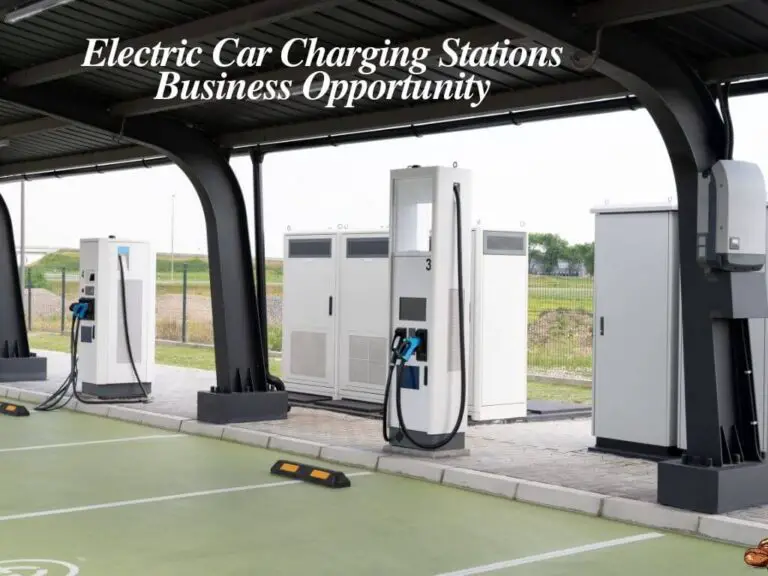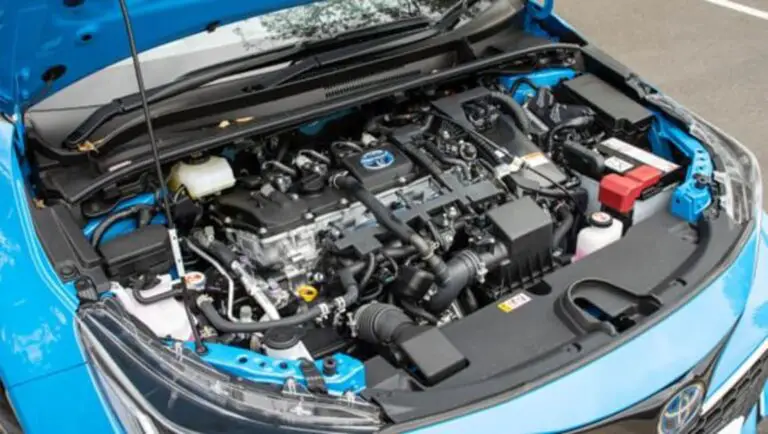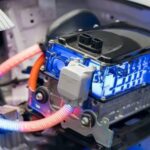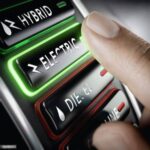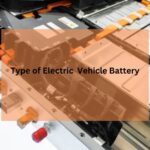To become a mechanic for electric cars, acquire formal training and education specific to electric vehicle technology and obtain relevant certifications. With the increasing popularity and demand for electric cars, there is a need for skilled professionals who can diagnose and repair their unique mechanical and electrical systems.
Investing in specialized education and certifications will make one qualified to work on electric vehicles and increase job prospects in this field.
As the automotive industry continues to evolve towards sustainable transportation, becoming a mechanic for electric cars can offer a rewarding and future-proof career.
The Rise Of Electric Cars
Discover how to become a skilled mechanic for electric cars and be part of the exciting rise of this innovative technology. Gain expertise in the unique components and systems that power electric vehicles, positioning yourself for a rewarding career in the field.
The Rise of Electric Cars: A Brief Introduction The automotive industry is undergoing a revolutionary shift with the rise of electric cars. As concerns about climate change and fossil fuel depletion mount, more and more people are turning to electric vehicles as a sustainable and eco-friendly alternative.
History And Evolution Of Electric Cars
Electric cars are not a new concept. In fact, they have been around for over a century. The first electric vehicle was built in the early 19th century and gained popularity due to their quiet and smooth operation.
However, the limited range and lack of charging infrastructure hindered their widespread adoption. Over the years, advancements in battery technology and the push for cleaner transportation solutions have fueled the evolution of electric cars.
Major automakers have invested heavily in research and development to overcome the challenges and improve the performance and efficiency of electric vehicles.
Today, electric cars are equipped with state-of-the-art batteries, regenerative braking systems, and sophisticated electric drivetrains, making them a viable option for everyday commuting.
Advantages And Benefits Of Electric Cars Over Traditional Vehicles
Electric cars offer a wide range of advantages and benefits that make them a compelling choice for consumers. Here are some key reasons why electric cars have gained popularity:
- Environmentally Friendly: Electric cars produce zero tailpipe emissions, helping to reduce air pollution and combat climate change. By transitioning from traditional vehicles to electric cars, individuals can contribute to a cleaner and greener future.
- Lower Operating Costs: Electric cars have lower operating costs compared to gasoline-powered vehicles. With lower fuel costs and reduced maintenance requirements (no oil changes or transmission repairs), electric vehicles can save drivers thousands of dollars over the lifetime of the vehicle.
- Energy Efficiency: Electric cars are more energy-efficient than internal combustion engine vehicles. The conversion of electrical energy to mechanical energy in electric vehicles is much more efficient than burning gasoline or diesel. This means electric cars can travel more miles per unit of energy consumed.
- Quiet and Smooth Ride: Electric vehicles provide a quiet and smooth driving experience, thanks to their electric motors. Say goodbye to the rumbling engine noise and enjoy the serenity on the road.
- Government Incentives: Many governments around the world offer incentives and rebates to encourage the adoption of electric vehicles. These incentives can include tax credits, grants, and discounted registration fees, making electric cars more affordable for consumers.
Growing Interest And Demand For Electric Cars Worldwide
The interest and demand for electric cars have been on a steady rise globally. As more governments set targets and implement policies to reduce emissions from transportation, the adoption of electric vehicles has become a top priority.
Additionally, the increasing availability of charging infrastructure and the expansion of electric vehicle models from various manufacturers have also contributed to the growing interest in electric vehicles.
Several countries have already committed to phasing out the production and sale of internal combustion engine vehicles in the coming years. Consumers are recognizing the long-term benefits of electric cars and are seeking to make the switch.
This rising demand has prompted automakers to invest heavily in electric vehicle production and research, resulting in more affordable and technologically advanced electric cars.
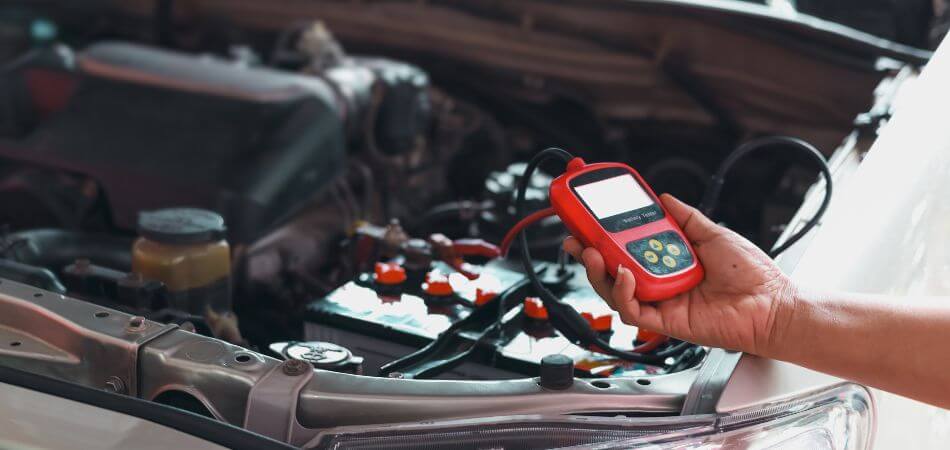
Understanding The Basics Of Electric Car Mechanics
Electric cars have gained significant popularity in recent years, thanks to their eco-friendly nature and efficient performance. If you’re fascinated by the world of electric cars and want to become a mechanic for these futuristic vehicles, understanding the basics of electric car mechanics is essential.
How Electric Cars Work: An Overview
Electric cars, in simple terms, are powered by electricity stored in high-capacity batteries. These batteries supply electrical energy to an electric motor, which propels the car forward.
To charge the batteries, electric cars can be plugged into an electrical power source, such as a charging station or a wall socket, or they can generate electricity through regenerative braking, where the energy generated during braking is converted back into usable electrical energy.
Electric cars utilize a controller or an electronic control unit (ECU) that manages the flow of electricity to the motor, ensuring smooth acceleration and deceleration. Additionally, the ECU controls various other functions of the car, such as regenerative braking, battery management, and thermal management, to optimize performance and efficiency.
Key Components And Systems Of Electric Cars
Now, let’s take a closer look at the key components and systems that make up an electric car:
Battery pack:
The battery pack is the heart of an electric car, storing the electrical energy required to power the vehicle. It is typically made up of numerous lithium-ion cells connected in series and parallel configurations. The size and capacity of the battery pack determine the range and performance of the electric car.
Electric motor:
The electric motor is responsible for converting electrical energy from the battery into mechanical energy, which propels the vehicle. Electric cars generally use one or more electric motors, depending on the design and model.
Inverter:
The inverter is an important component that converts the direct current (DC) from the battery pack into alternating current (AC) to power the electric motor. It plays a crucial role in controlling the motor’s speed and torque for optimal performance.
Charging system:
Electric cars require a charging system to replenish the energy stored in the battery pack. This system includes a charging port, onboard charger, and charging cable. There are different charging options available, ranging from standard household outlets to high-power fast-charging stations.
Thermal management system:
Electric cars employ a thermal management system to regulate the temperature of the battery pack, electric motor, and other components. This system ensures optimal performance and extends the lifespan of these crucial parts.
Differences Between Electric Cars And Internal Combustion Engine Vehicles
While electric cars and internal combustion engine (ICE) vehicles serve the same purpose of transportation, there are significant differences in their mechanics and operation:
| Electric Cars | Internal Combustion Engine Vehicles |
|---|---|
| Powered by electricity stored in batteries | Powered by burning fossil fuels (gasoline or diesel) |
| Electric motors drive the wheels | Combustion engines drive the wheels through a transmission system |
| No tailpipe emissions | Tailpipe emissions contribute to air pollution |
| Regenerative braking | Traditional braking systems |
| Lower maintenance requirements | Regular maintenance and oil changes |
Understanding the differences between electric cars and internal combustion engine vehicles is crucial for mechanics specializing in electric car repair and maintenance. By grasping these distinctions, you’ll be better equipped to diagnose and fix issues specific to electric cars.
In conclusion, gaining a solid understanding of the basics of electric car mechanics is the first step towards becoming a skilled mechanic for these cutting-edge vehicles. By comprehending how electric cars work and familiarizing yourself with their key components and differences compared to traditional vehicles, you’ll be well on your way to a successful career in electric car mechanics.
Essential Tools And Equipment For Electric Car Maintenance
Discover the essential tools and equipment needed to maintain electric cars – a must-have for aspiring electric car mechanics.
As electric cars continue to gain popularity, so does the need for skilled mechanics who can maintain and repair them. If you’re interested in becoming a mechanic for electric cars, it’s important to understand the essential tools and equipment you’ll need to have in your arsenal.
Must-have Tools For Electric Car Owners
When it comes to maintaining an electric car, having the right tools is key. Here is a list of must-have tools for all electric car owners:
- Battery charger: A high-quality battery charger is essential for keeping your electric car’s battery at optimal levels. Look for one that is specifically designed for electric vehicles and has the ability to charge at a fast rate.
- Torque wrench: Electric cars rely heavily on torque-sensitive components, so having a torque wrench is crucial for ensuring proper tightening of bolts and nuts. This will help prevent damage to vital components and ensure safe operation.
- Multimeter: A multimeter is a versatile tool that allows you to measure voltage, resistance, and current. It is essential for diagnosing and troubleshooting electrical problems in an electric car.
- Insulation gloves and safety goggles: Safety should always be a top priority when working on electric cars. Insulation gloves and safety goggles are necessary to protect yourself from electrical shocks and other potential hazards.
- Electric vehicle diagnostic tool: An electric vehicle diagnostic tool is specifically designed to read and interpret diagnostic trouble codes (DTCs) specific to electric cars. It helps identify issues with the car’s electrical systems and enables you to make accurate repairs.
Safety Precautions When Working On Electric Cars
Working on electric cars requires special safety precautions to protect yourself and the vehicle. Here are some important safety measures to keep in mind:
- Always wear insulated gloves and safety goggles when working on electric cars to prevent electrical shock and injury.
- Turn off the car and disconnect the battery before performing any maintenance or repairs.
- Be cautious of high-voltage components, such as the battery pack and power inverter, and follow manufacturer guidelines for safe handling.
- Do not work on electric cars alone. It’s important to have someone nearby who can assist you or provide help in case of emergencies.
- Keep flammable materials away from the car and make sure the work area is well-ventilated to prevent the buildup of dangerous gases.
Recommended Equipment For Diagnosing And Troubleshooting Electric Car Issues
When it comes to diagnosing and troubleshooting electric car issues, having the right equipment is essential. Here are some recommended tools and equipment that will help you in your diagnostic process:
| Equipment | Description |
|---|---|
| OBD-II scanner | An OBD-II scanner is a diagnostic tool that reads and clears diagnostic trouble codes (DTCs) from the car’s onboard computer. It provides valuable information about the car’s systems and helps pinpoint the source of the problem. |
| Power analyzer | A power analyzer measures and analyzes the performance of the electric car’s electrical system. It helps identify any inefficiencies or abnormalities that may be affecting the car’s performance. |
| High-voltage insulation tester | A high-voltage insulation tester is used to check the insulation resistance of high-voltage components. It ensures that the car’s electrical system is properly insulated and safe to use. |
| Thermal imaging camera | A thermal imaging camera detects and visualizes heat patterns, which can be useful in identifying hot spots or overheating components in an electric car. |
By having these recommended tools and equipment at your disposal, you’ll be well-equipped to diagnose and troubleshoot any issues that may arise with electric cars.
Remember to always prioritize safety and follow the manufacturer’s guidelines when working on electric vehicles.
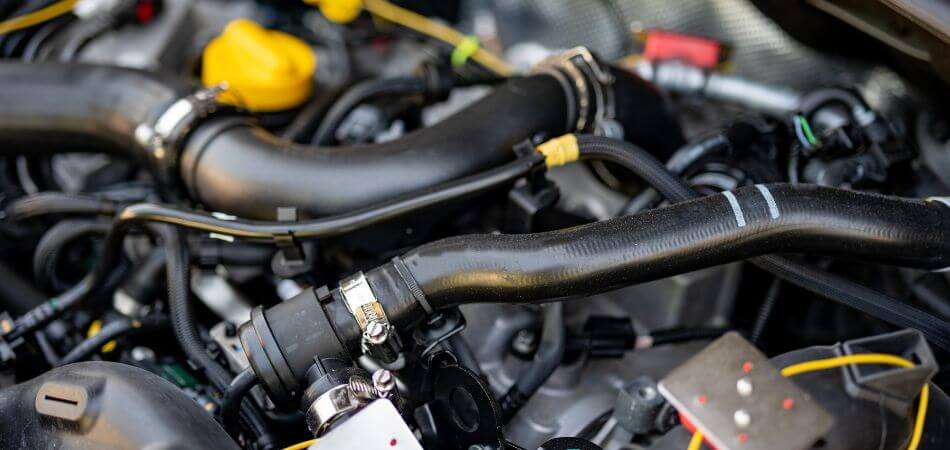
Mastering Electric Car Maintenance: Step-by-step Guide
As electric vehicles become increasingly popular, mastering the art of electric car maintenance is essential for mechanics. Electric cars have unique components and systems that require specialized knowledge and skills.
In this step-by-step guide, we will explore the regular maintenance tasks for electric cars, tips for maintaining battery health and maximizing range, and troubleshooting common electrical and mechanical issues. Let’s dive in!
Regular Maintenance Tasks For Electric Cars
Just like conventional vehicles, electric cars also require regular maintenance to ensure optimal performance and longevity.
Here are some essential regular maintenance tasks that mechanics should be proficient in:
- Inspecting and replacing brake pads: Electric cars often rely on regenerative braking, which minimizes wear on traditional brake pads. However, mechanics should still check the condition of the pads regularly and replace them if necessary for safety and efficiency.
- Checking and replacing air filters: Proper air filtration is crucial for maintaining optimum performance and reducing wear on the motor and other components. Mechanics need to inspect and replace air filters at recommended intervals to ensure clean airflow.
- Monitoring and replacing coolant: Electric car batteries generate heat during operation, and efficient cooling is essential for battery health. Mechanics should regularly check the coolant levels and replace it as needed, following manufacturer guidelines.
- Verifying tire pressure and tread depth: Correct tire pressure and proper tread depth are vital for electric car efficiency and handling. Mechanics should ensure that tires are properly inflated and in good condition to maximize range and ensure safety.
Tips For Maintaining Battery Health And Maximizing Range
The battery is the heart of an electric car, and its proper maintenance is crucial for performance and longevity. Here are some valuable tips for ensuring battery health and maximizing range:
- Charge regularly and avoid deep discharge: Regularly charging your electric car helps maintain the battery’s health and capacity. Avoid fully depleting the battery as much as possible, as deep discharges can impact its overall lifespan.
- Follow smart charging practices: Opt for level 2 or level 3 chargers whenever possible, as they are faster and more efficient than standard household outlets. Avoid rapid charging and extreme temperature conditions for extended periods, as they can degrade the battery faster.
- Monitor charging habits: Being mindful of your charging habits can help maximize your vehicle’s range. Avoid leaving your electric car fully charged or completely discharged for extended periods. Aim to keep the battery level between 20% and 80% for optimal performance.
- Consider temperature management: Extreme temperatures can significantly impact battery performance. Whenever feasible, park your electric car in shaded or covered areas during hot weather and use pre-conditioning features to cool or heat the cabin while the vehicle is still charging.
Troubleshooting Common Electrical And Mechanical Issues
Having the ability to troubleshoot common electrical and mechanical issues is crucial for mechanics working on electric cars. Here are some common problems and their possible solutions:
| Issue | Possible Solution |
|---|---|
| Lack of power/range reduction | Check battery health, ensure proper tire pressure, verify charging infrastructure compatibility, and educate the driver on efficient driving techniques. |
| Electrical system malfunctions | Inspect and test electrical components, connections, and wiring. Update software/firmware as needed. If necessary, replace faulty parts. |
| Braking system issues | Inspect and test brake components, sensors, and regenerative braking systems. Perform necessary repairs or replacements as per manufacturer guidelines. |
By mastering these regular maintenance tasks and understanding how to maintain battery health and troubleshoot common issues, mechanics can become experts in electric car maintenance. Embracing the future of transportation, you’ll be ready to keep these efficient vehicles running smoothly on the road.

How To Master The Art Of Diagnosing Electric Car Problems
As electric cars become increasingly popular, the demand for skilled mechanics who specialize in electric vehicle maintenance and repairs is on the rise. One of the key skills that every aspiring electric car mechanic should master is the art of diagnosing electric car problems. Electric vehicles (EVs) operate differently than traditional combustion engine cars, and their complex systems require a unique approach to troubleshooting.
Understanding Warning Signs And Error Codes
Diagnosing electric car problems starts with understanding the warning signs and error codes that EVs may present. Unlike conventional vehicles, electric cars come equipped with advanced onboard diagnostics systems that can generate error codes to pinpoint potential issues. These error codes, along with warning signs such as unusual sounds or smells, can provide valuable clues about the underlying problem.
When encountering warning signs or error codes in electric cars, it is essential for mechanics to have a solid understanding of electric vehicle technology and how different components work together. By recognizing these warning signs and having the knowledge to interpret error codes, mechanics can quickly identify the root cause of the problem and develop an effective repair plan.
Diagnostic Techniques And Tools For Electric Cars
Effective diagnostic techniques and the right tools are vital for diagnosing and repairing electric car issues. Electric vehicles have intricate electrical systems, complex drive trains, and sophisticated computerized controls that require specialized diagnostic tools.
Here are some diagnostic techniques and tools that every mechanic should be familiar with:
- OBD-II Scanners: Similar to traditional vehicles, electric cars use the standard OBD-II (On-Board Diagnostics) system to monitor and report system faults. Mechanics should have access to OBD-II scanners that are specifically designed for electric vehicle diagnostics.
- Multimeters: A multimeter is an essential tool for measuring electrical properties such as voltage, current, and resistance. Mechanics can use a multimeter to test various electrical components, including batteries, motors, and charging systems.
- Power Analyzers: Power analyzers help measure power consumption, detect abnormalities in electrical circuits, and identify potential energy losses. These tools are invaluable when troubleshooting issues related to the electric car’s powertrain.
Troubleshooting Common Issues: Battery Failure Or Motor Problems
Among the common issues that electric cars may face, battery failure and motor problems stand out as critical areas for diagnostics. Electric vehicle batteries degrade over time, impacting the car’s overall performance and range. Mechanics need to be well-versed in battery testing techniques and have the ability to diagnose and replace faulty batteries.
Motor problems are another area that requires substantial attention. Mechanics should have knowledge of various electric motor types, their components, and diagnostic procedures.
By identifying motor issues such as overheating or mechanical failures, mechanics can effectively address the problems and ensure optimal performance.
Additionally, mechanics should be equipped to troubleshoot other common electric car problems, such as malfunctioning charging systems, faulty electrical connections, or issues with regenerative braking systems.
Staying updated with the latest electric vehicle repair guidelines and participating in specialized training programs can further enhance a mechanic’s troubleshooting skills.
How To Perform Basic Electric Car Repairs And Upgrades
Learn how to become a skilled mechanic for electric cars with our comprehensive guide. Discover step-by-step instructions on performing basic repairs and upgrades, equipping yourself with the skills needed to excel in this exciting field.
Step-by-step Guide To Replacing Common Electric Car Components
If you own an electric car, knowing how to replace common components is essential for ensuring its smooth operation. Whether it’s a faulty battery, malfunctioning motor, or a worn-out charging port, being able to replace these components can save you both time and money.
Here’s a step-by-step guide on how to perform basic electric car repairs:
Identifying the problem is the first and most crucial step in replacing any component. This involves diagnosing the issue through careful observation and the use of diagnostic tools. Look for any warning lights on the dashboard, strange sounds, or unusual behavior of the car.
Once you have identified the problem, you can move on to the next step.
Step 2: Gather the necessary tools and parts
To replace a component, you’ll need the right tools and replacement parts. Make sure to research and purchase the correct replacement part that matches your electric car’s make and model.
Additionally, gather the necessary tools such as a wrench, socket set, pliers, and safety equipment like gloves and safety glasses. Before starting any repairs, always disconnect the power source to ensure your safety.
In the case of an electric car, disconnect the battery by locating the battery compartment and loosening the terminals with a wrench. This step is critical to avoid electrocution and other accidents.
Step 4: Remove and replace the faulty component
Using the appropriate tools, carefully remove the faulty component from the electric car. This may involve unbolting, unplugging, or unscrewing the component depending on the type.
Once removed, replace it with the new component by following the reverse process. Ensure all connections are secure and fastened properly. After replacing the component, it’s crucial to test its functionality.
Reconnect the power source, turn on the car, and observe the repaired component. Listen for any unusual sounds, check for warning lights, and ensure that the car operates as expected.
If everything appears to be in order, you have successfully replaced a common electric car component.
Upgrading The Charging System For Faster Charging Times
To enhance your electric car’s charging capabilities, upgrading the charging system can significantly reduce charging times.
Here’s how you can upgrade the charging system for faster charging:
Start by researching different charging systems compatible with your electric car. Look for high-speed chargers, also known as Level 3 or DC fast chargers, that offer faster charging rates compared to the standard Level 2 chargers. Consider factors such as compatibility, charging speed, and budget.
Upgrading the charging system of an electric car requires technical expertise.
It is recommended to consult with a professional electrician or mechanic well-versed in electric car charging installations. They can assess your current system, recommend compatible upgrades, and ensure a safe and efficient installation.
Step 3: Purchase and install the new charging system
Once you have selected the appropriate charging system, purchase it from a reputable supplier. Follow the manufacturer’s installation instructions carefully, or better yet, hire a qualified professional for a seamless installation. This step ensures that the charging system is installed correctly, minimizing the risk of any damage or safety hazards.
After the installation, it’s essential to test the upgraded charging system. Connect your car to the charging station and monitor the charging speed. Measure the time it takes for your electric car’s battery to reach a desired charge level.
If the charging times have significantly improved, you have successfully upgraded your charging system for faster charging.
Installing Additional Features And Accessories For Enhanced Performance
In addition to repairs and charging system upgrades, installing additional features and accessories can enhance the performance and functionality of your electric car.
Here’s how you can go about it:
Determine the features and accessories that align with your needs and preferences. Whether it’s a touchscreen infotainment system, advanced safety features, or performance enhancements such as aerodynamic body kits, make a list of the features you would like to install.
Research the compatibility of each feature or accessory with your electric car’s make and model. Ensure that they are from reputable manufacturers and meet the necessary safety and quality standards.
Read reviews and seek recommendations from other electric car owners to make an informed decision. Once you have identified the desired features and assessed their compatibility, purchase them from authorized dealers or trusted suppliers.
Follow the manufacturer’s installation instructions or consult with a professional installer to ensure a proper and secure installation.
After the installation, it’s essential to test the newly installed features and accessories. Check that they function as expected and integrate seamlessly with your electric car’s existing systems.
If everything works well and enhances the performance of your electric car, you have successfully installed additional features for an enhanced driving experience.
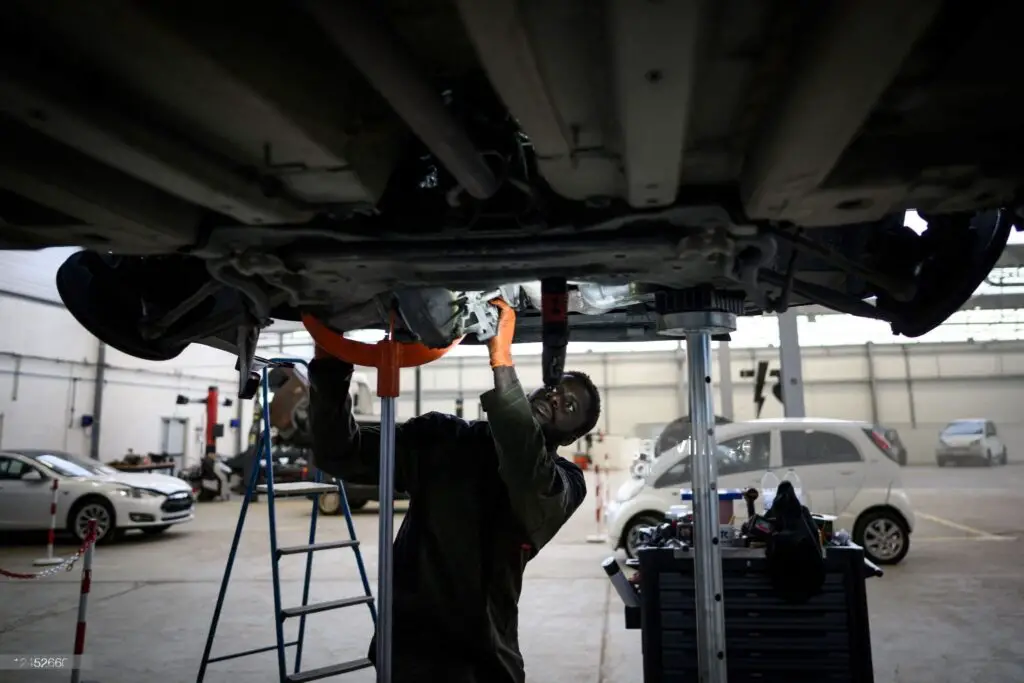
Becoming An Expert: Advanced Electric Car Mechanics
Once you have mastered the basics of electric car mechanics and familiarized yourself with the essential components and systems, you may be ready to take your skills to the next level.
Becoming an expert electric car mechanic involves deepening your understanding of electric car subsystems, developing advanced diagnostic techniques for troubleshooting complex issues, and staying at the forefront of evolving electric car technology and maintenance practices.
In-depth Understanding Of Electric Car Subsystems
To become an expert in electric car mechanics, it is crucial to have an in-depth understanding of the various subsystems that make up an electric vehicle (EV). This includes the battery pack, electric motor, power electronics, charging system, and thermal management system.
An in-depth understanding of electric car subsystems allows you to diagnose problems more effectively and provide accurate solutions. You should be familiar with the different types of EV batteries, including lithium-ion, and understand how they function, how to maintain them, and how to troubleshoot battery-related issues.
It’s also important to have a thorough knowledge of electric motors and power electronics. This includes understanding motor types, their operation principles, and how to interpret motor control software. Being able to troubleshoot motor and power electronics issues will be essential in your journey towards becoming an advanced electric car mechanic.
Advanced Diagnostic Techniques For Complex Issues
As an advanced electric car mechanic, you need to have advanced diagnostic skills to handle complex issues that may arise with electric vehicles. While basic diagnostic techniques may work for simple problems, more advanced techniques are necessary for identifying elusive and challenging system malfunctions.
Developing your diagnostic skills involves staying updated with the latest diagnostic tools and software used in the electric car industry. These tools can include vehicle communication interfaces, oscilloscopes, thermal imaging cameras, and specialized software for analyzing electric vehicle data and codes.
Furthermore, expertise in interpreting diagnostic codes, vehicle data, and system logs becomes crucial in diagnosing intricate electrical and electronic problems. You should be able to analyze data from various sensors, identify patterns, and make informed decisions when troubleshooting complex issues.
Exploring The Future Of Electric Car Technology And Maintenance
As an expert electric car mechanic, staying ahead of the curve when it comes to emerging electric car technology and maintenance practices is essential. The field of electric vehicles is continuously evolving, and new advancements are constantly reshaping the industry.
One way to explore the future of electric car technology and maintenance is to stay informed through industry publications, research papers, and attending relevant conferences and workshops. These resources can provide insights into upcoming technologies, new maintenance approaches, and the latest best practices for electric car mechanics.
Additionally, taking part in continuous education and training programs specific to electric vehicle technology can ensure that you remain up-to-date with the latest advancements and continue honing your expertise. This can include specialized courses on hybrid and electric car systems, advanced diagnostics, and electrical/electronic troubleshooting.
By staying knowledgeable about the latest trends and advancements in electric car technology and maintenance, you can position yourself as a true expert in the field and stay ahead of the competition.
Frequently Asked Questions- For How To Become A Mechanic For Electric Cars
What Type Of Training Do I Need To Repair Electric Cars?
To repair electric cars, you need specialized training in electric vehicle technology. This includes understanding electrical systems, battery technology, and diagnostic procedures. Additionally, knowledge of safety protocols and regulations is essential.
What Is A Electric Car Mechanic Called?
An electric car mechanic is typically referred to as an electric vehicle technician. They specialize in repairing and maintaining electric cars, ensuring optimal performance and efficiency.
What Skills Do You Need To Be An Electric Vehicle Technician?
To be an electric vehicle technician, you need skills such as knowledge of electrical systems, problem-solving abilities, proficiency in diagnostics and maintenance, familiarity with EV technology advancements, and adherence to safety protocols.
Is It a Good Idea to Become an Auto Mechanic?
Becoming an auto mechanic can be a good idea if you have a passion for working on vehicles, enjoy problem-solving, and are willing to invest in training and certifications. It can offer a stable and potentially rewarding career in the automotive industry.
Conclusion
To sum up, becoming a mechanic for electric cars is a rewarding and promising career choice. As the demand for eco-friendly vehicles continues to rise, mastering the skills required to service and repair electric cars puts you at the forefront of an expanding industry.
By staying updated with the latest technology advancements and gaining hands-on experience, you can carve a successful path in this field. So, take the leap and embark on a fulfilling journey as an electric car mechanic.

